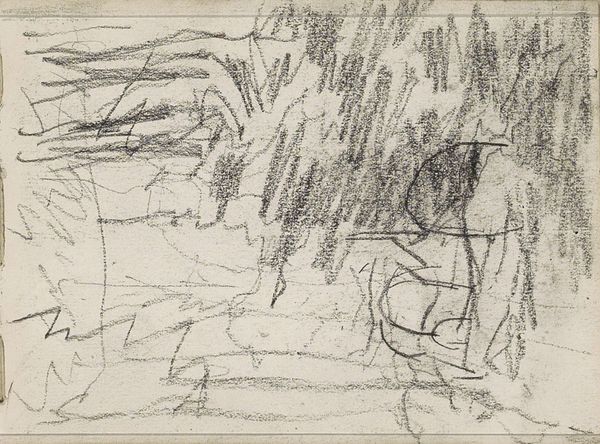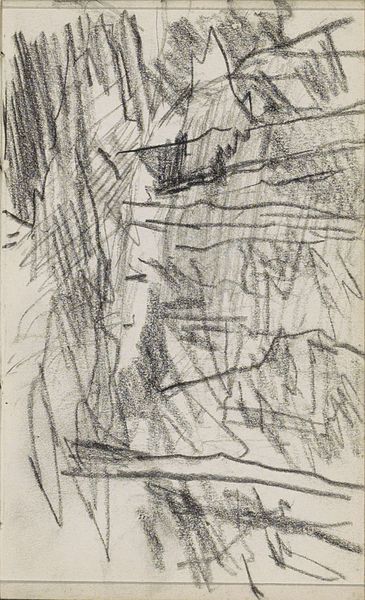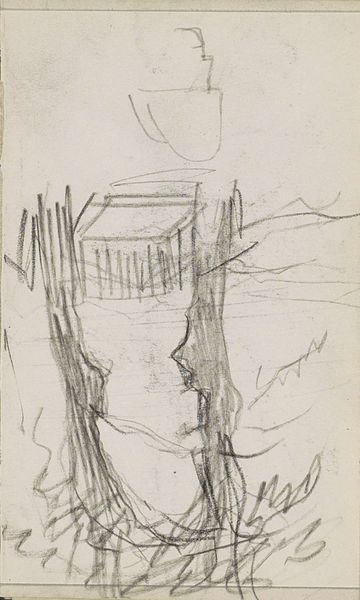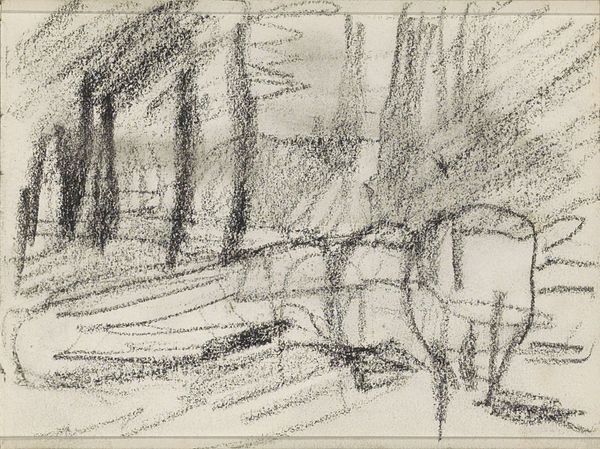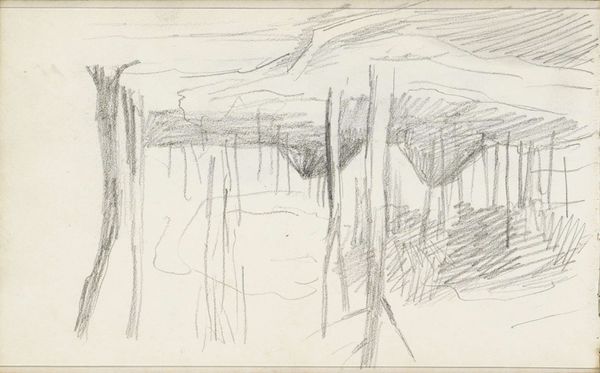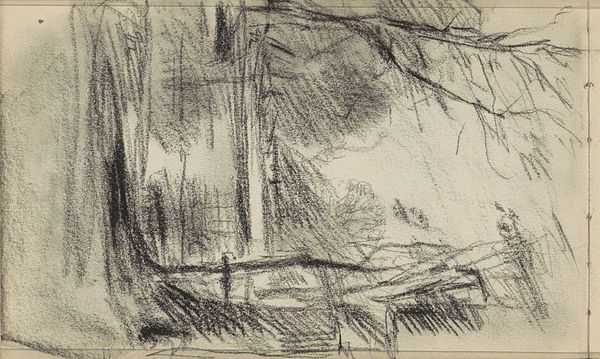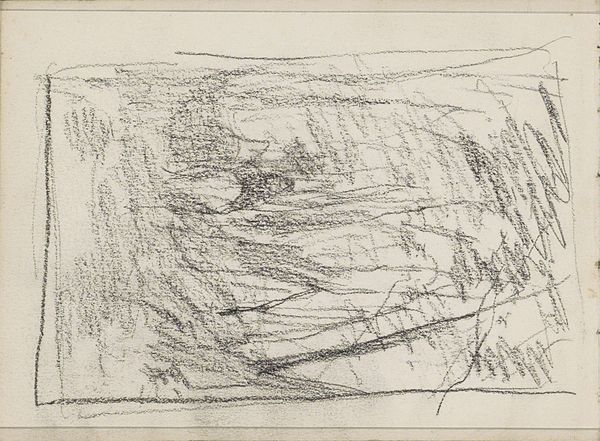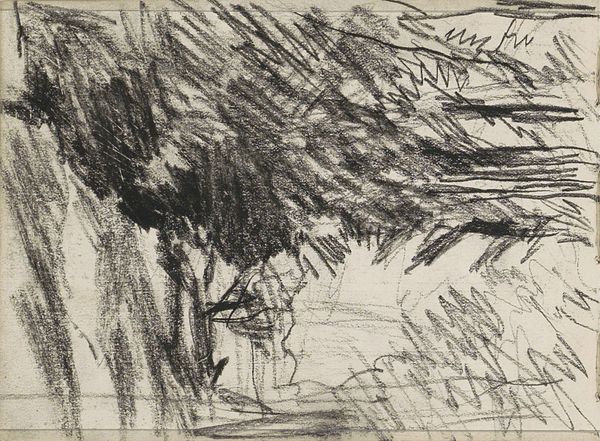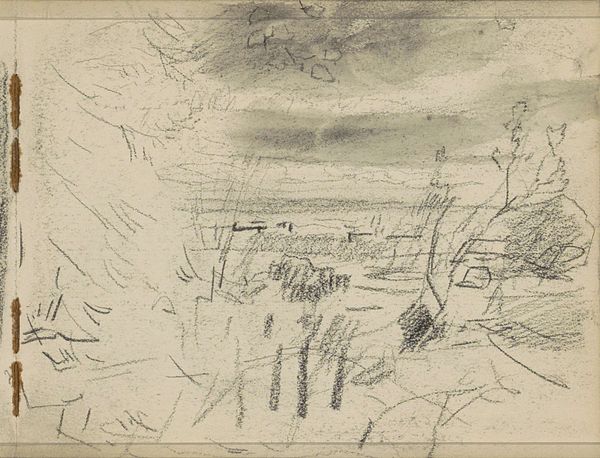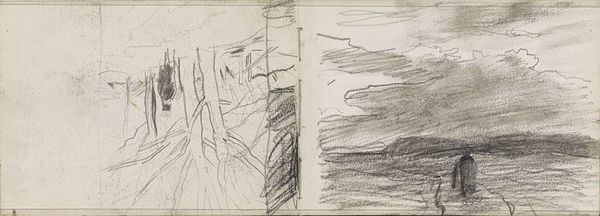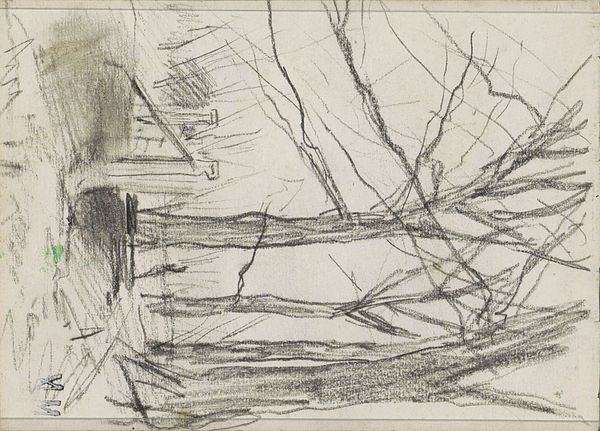
Boerin voorover buigend naar enkele schapen bij een boom c. 1876 - 1879
0:00
0:00
drawing, pencil
#
drawing
#
impressionism
#
pencil sketch
#
landscape
#
pencil
#
genre-painting
#
realism
Copyright: Rijks Museum: Open Domain
Editor: This is "Boerin voorover buigend naar enkele schapen bij een boom," a pencil drawing by Anton Mauve, from around 1876-1879. It feels very immediate, like a quick impression captured in charcoal… almost mournful in its muted tones. What stands out to you? Curator: It’s interesting you say mournful. I immediately think of the back-breaking labour endured by women in rural agricultural settings at this time. How does Mauve’s depiction contribute to or challenge prevailing representations of women's work in the late 19th century? Is it romanticised or critical, or perhaps a bit of both? Editor: That's a great point. I see some tenderness in the way the woman bends towards the sheep, a sort of caring interaction. Maybe that complicates the idea of mere back-breaking labour? Curator: Precisely. Now, let’s consider the choice of subject: a female farmer tending to sheep. Mauve was part of the Hague School, so his focus was on depicting everyday life. But what does it mean to highlight this particular figure – the rural woman? Were these artworks viewed differently by men versus women at the time, and how are they consumed today, for example, by those fighting for social justice? Editor: It makes me wonder about the viewer's position, both then and now, in relation to this labour. Were urban viewers meant to feel a certain kind of empathy, or distance? Curator: Exactly. This simple drawing opens up questions about the romanticization of rural life, class divisions, and even the male gaze on female labour. These were and are incredibly pertinent questions in a quickly industrialising nation. Editor: Wow, I hadn't considered so many layers within such a simple sketch! I guess seeing through a feminist and historical lens really deepens the reading. Curator: Absolutely! It's a reminder that art always speaks within and to specific socio-political contexts.
Comments
No comments
Be the first to comment and join the conversation on the ultimate creative platform.

